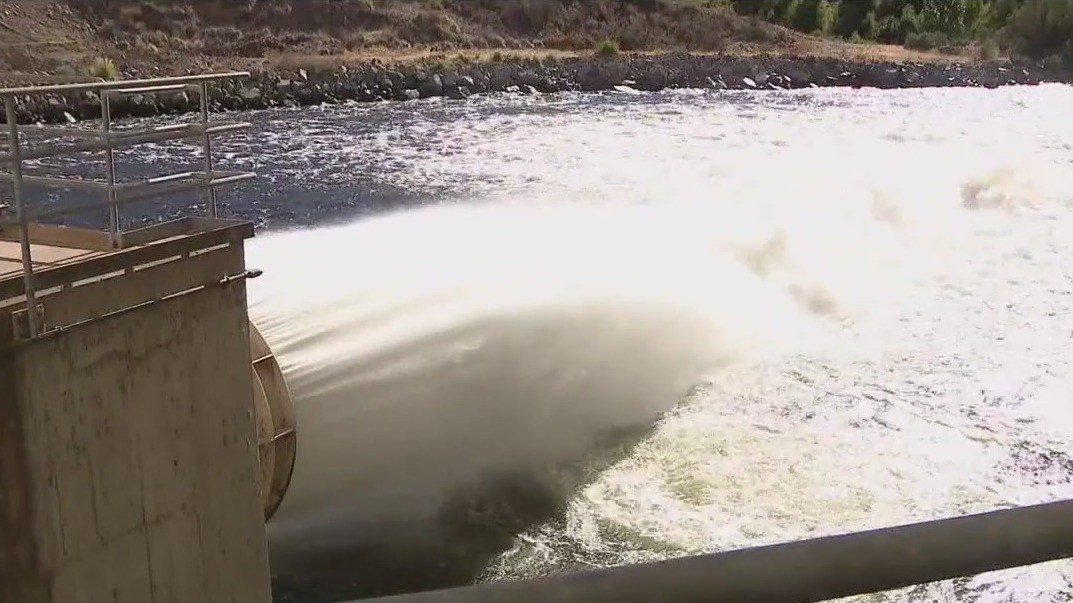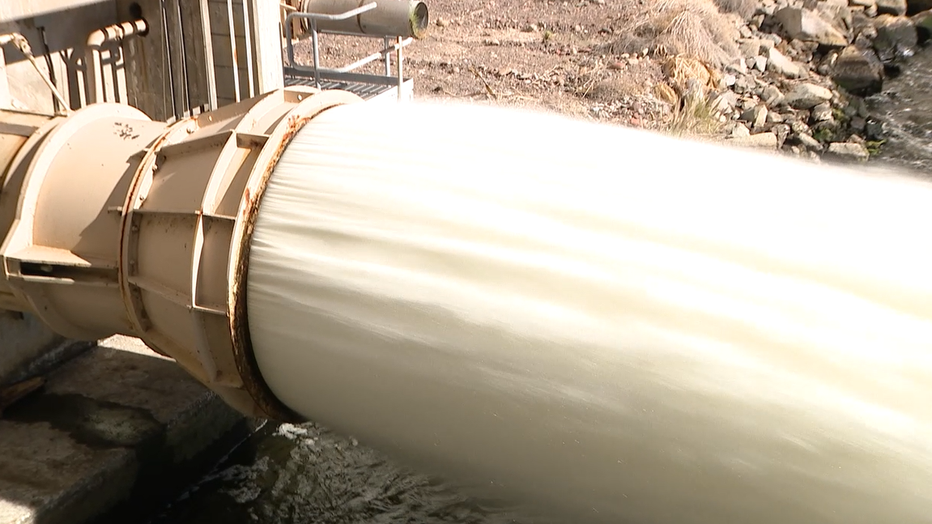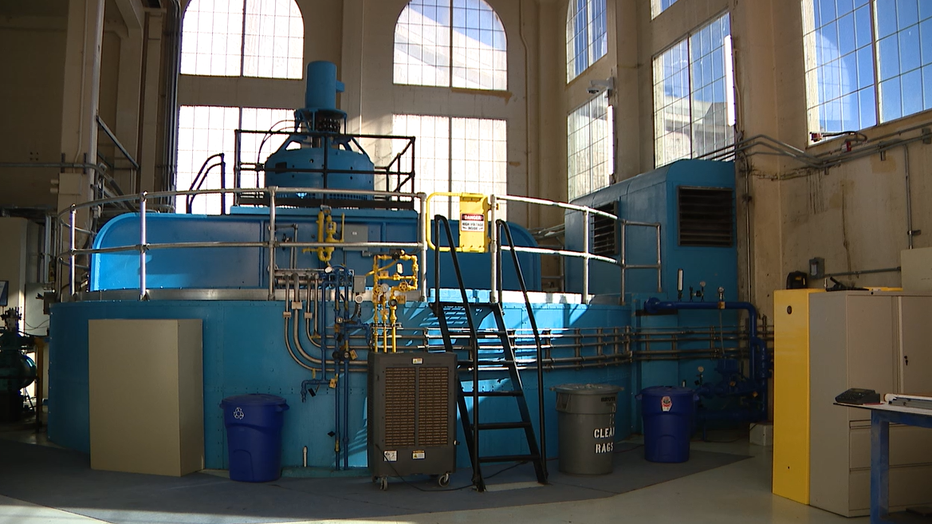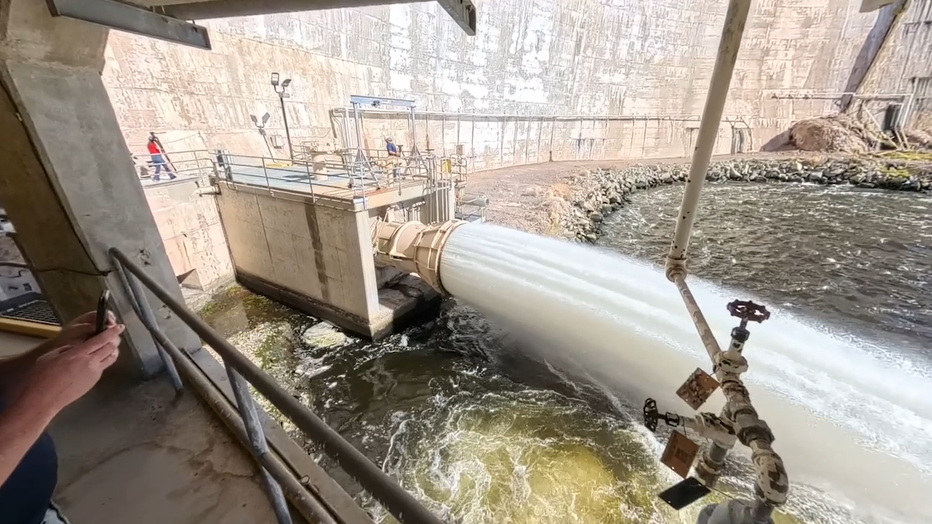SRP prepares for 'river swap' at Stewart Mountain Dam to slow the flow of Salt River for the winter

SRP prepares to slow flow of Salt River for winter
SRP is getting ready for Thursday's "river swap" where the valve at Stewart Mountain Dam will be closed and power generation will switch to the Verde River. FOX 10's Steve Nielsen explains.
FORT MCDOWELL, Ariz. - Starting Nov. 14, SRP is about to do something called a "river swap."
We wanted an in-depth look at how it happened, but more importantly - why.
It’s so loud at the bottom of Stewart Mountain Dam that it's almost hard to hear yourself think. This is the point where the Salt River emerges from the dam, but in just a few days the water is going to be turned off and the power generation will be turned off.

This is actually something they do every winter.
An impressive feat of engineering built a century ago, Stewart Mountain Dam is the last on the Salt River to hold back Saguaro Lake.
The work it took impresses the man who now oversees it.
"Some of it was horse-drawn, very little vehicle use, a lot of it was by hand. Everything was done by hand and it’s crazy how robust everything is," said SRP's Tim Paul.
The turbine here generates enough power to run 2,500 homes.

"It spins inside the stater," says Paul. "That produces electricity."
Walking under the cat walk and under the concrete structure to get a closer look at the river exploding out of the valve.

Starting Nov. 14, this flow will turn to a drip. It's a necessity for SRP's water system.
The Valley demands water. Every day we all use water. We had to adjust that water flow, just like electricity, on a day-today basis," says Ivan Insua, SRP Hydro Generation Director.
Every winter, the Salt River slows and SRP pulls from the Verde River.
The Verde is a smaller system that’s easier to refill.
"Actually, we do draw that reservoir down quite a bit just to make room for that winter runoff because it can fill and spill almost statistically 50-50 shot each year," said Tim Skarupa with SRP Watershed Management.
It means Stewart Mountain Dam won’t generate electricity, but dams further up the Salt River still can due to water that has been pumped uphill.
"We generate during the day and the night when the power is cheaper, we can purchase power to basically throw that unit in reverse and pump water up and have that for fuel for the next day," Paul said.
It’s a complicated process, reevaluated daily to make sure the water and the power come from the right place.
It protects the dams and ensures water keeps flowing from our faucets.
READ MORE: SRP prepares to store as much water in Arizona as possible in watersheds
SRP says these rivers are healthy for the winter and spring months ahead.
As far as the lake goes, it will all still look the same.
The boats can be out here. All of that fun can take place and the water levels won’t change.
The change will occur on the Salt River, on the other side of the dam, where the flow will be a lot weaker.
The flow will increase again in the spring, but that date is TBD.
It all depends on how much rain we get in the winter.

